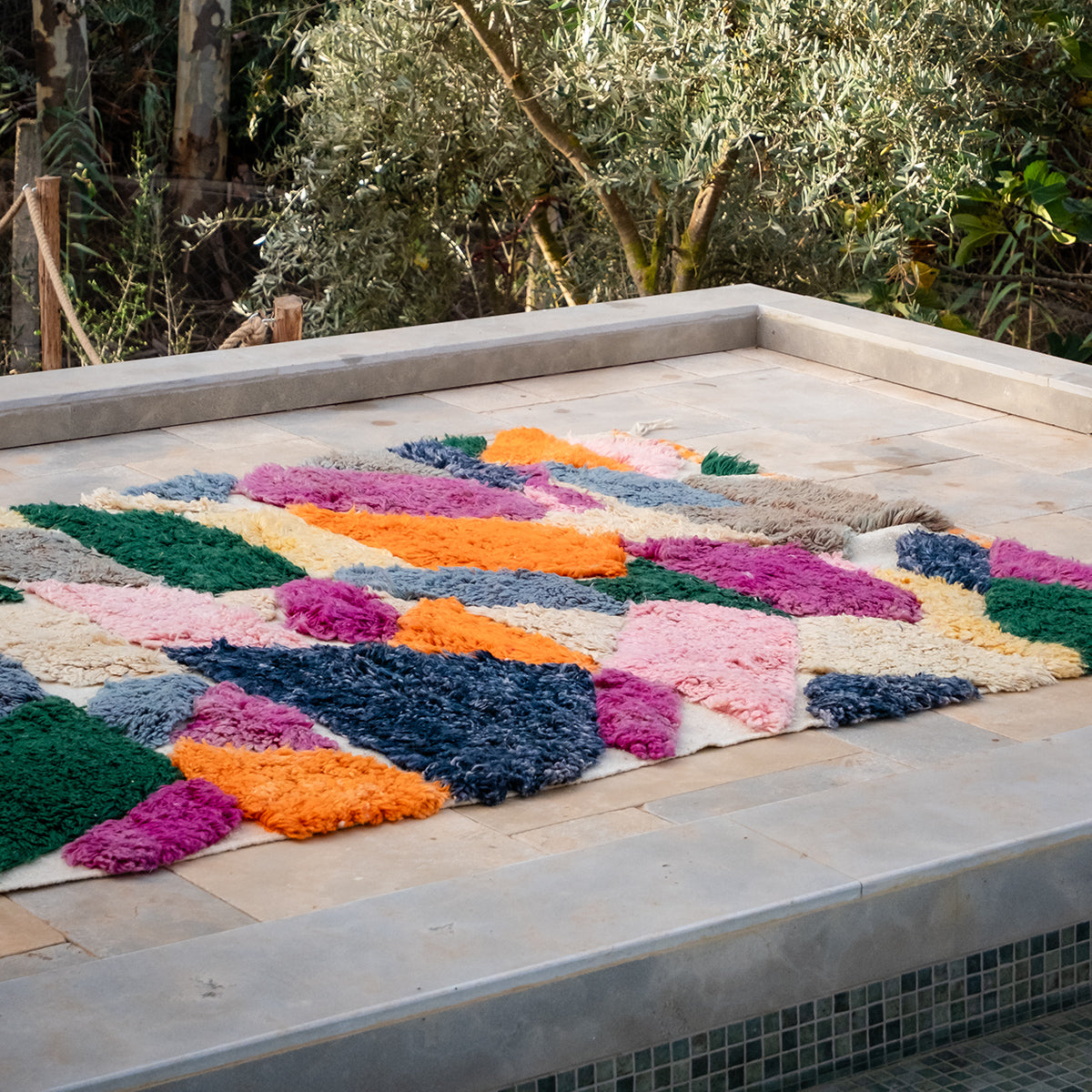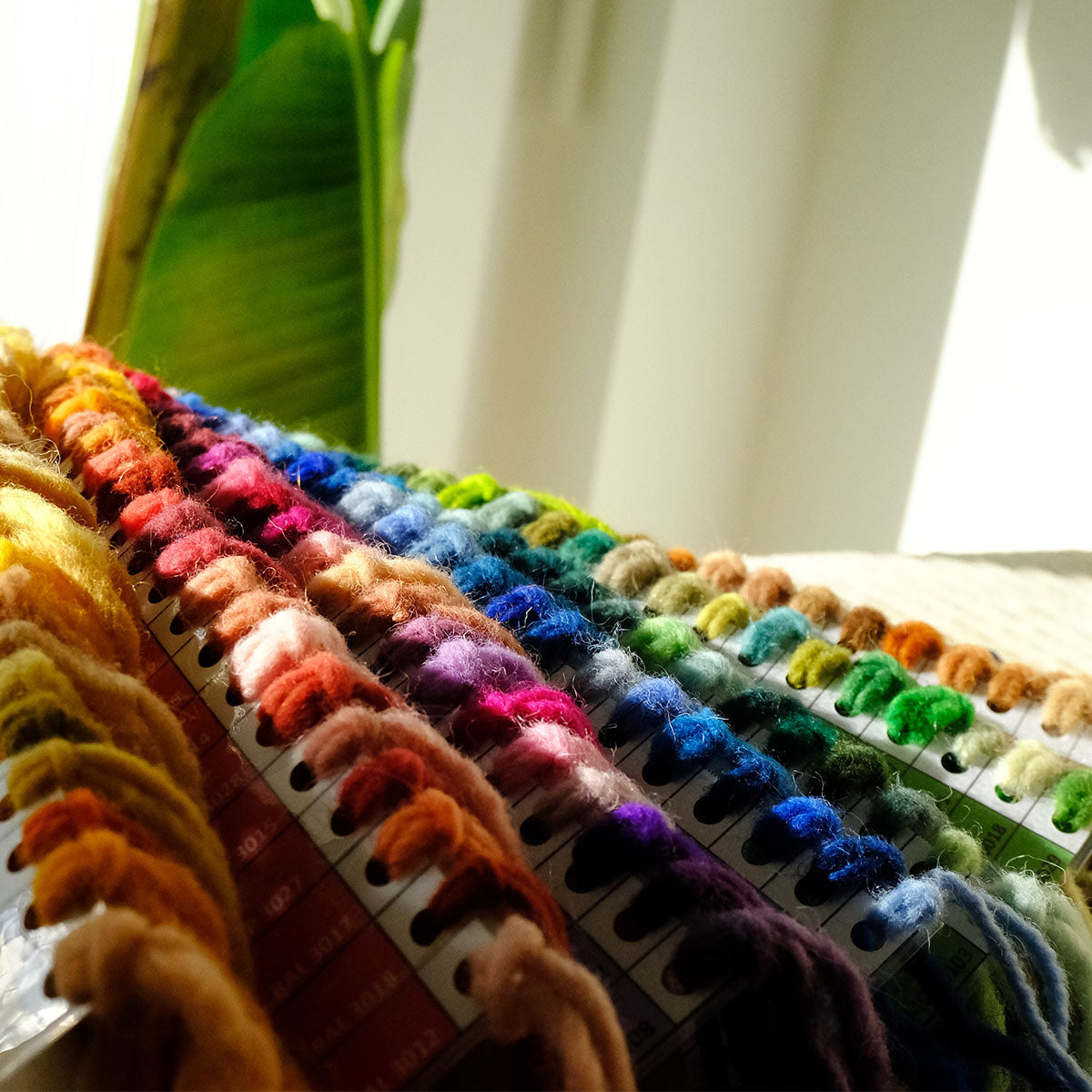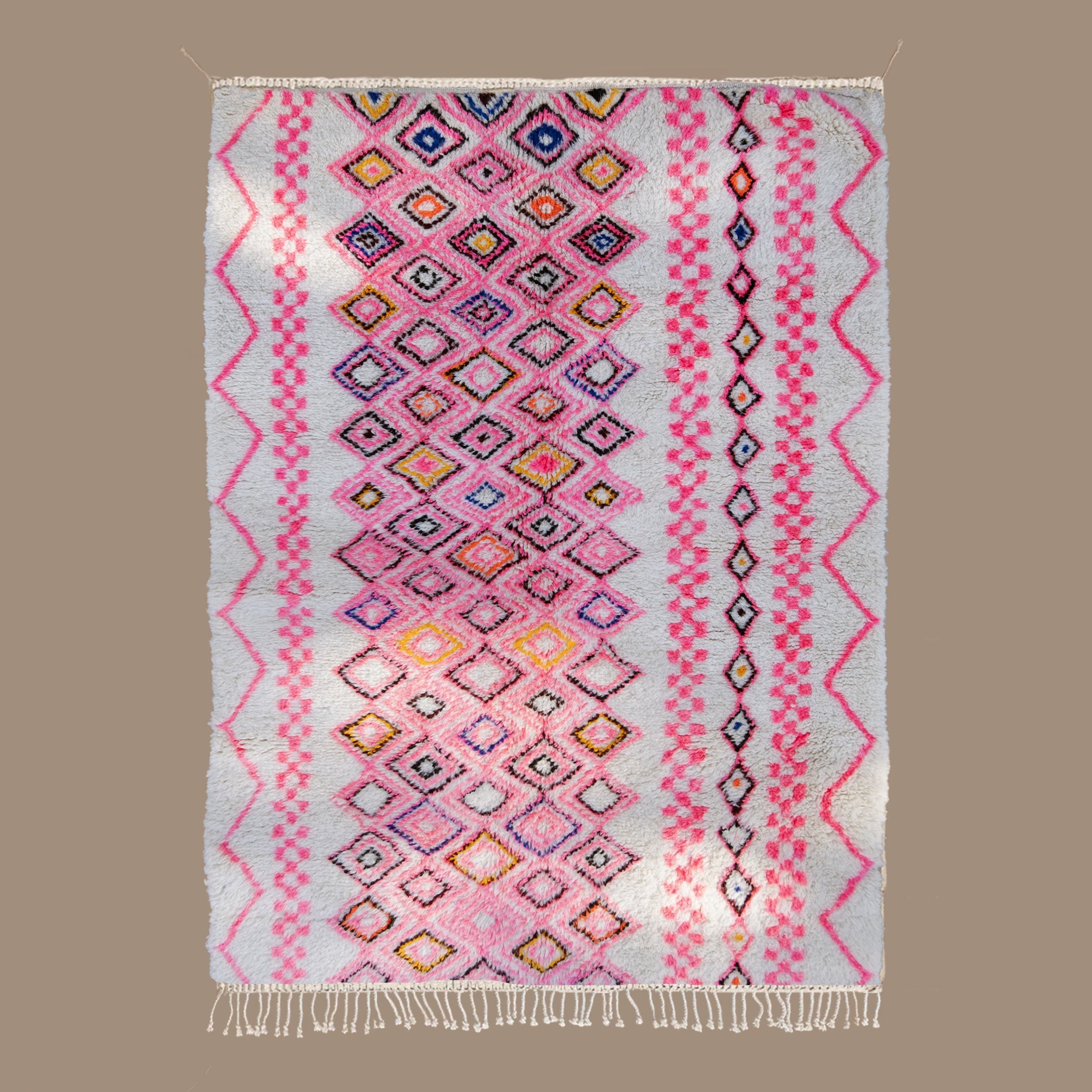Berber Rugs Process
Berber women, for centuries, have woven the intricate tapestry of their culture through the ancient art of handweaving, a tradition dating back to 600 B.C. The mastery of this craft is a sacred legacy, carefully transmitted from one generation to the next. Each stage in the weaving journey unfolds as a vibrant tapestry of tradition and significance, spanning from the tender gathering and dyeing of wool to the meticulous construction of the loom and the thoughtful creation of the final intricate design in the weave.

Sheep to Wool
The journey begins with the careful selection of sheep, goats, or camels whose wool will be used. The artisans practice ethical wool extraction, ensuring the animals are unharmed in the process. This approach results in wool that is not only of high quality but also healthier and stronger.

Wool preparation
The cleaned wool is transformed into yarn through a series of painstaking manual steps. Artisans wash, card, brush, and spin the wool into threads by hand, preparing it for the intricate weaving process ahead.

Natural Dyeing
Moroccan artisans take pride in using natural, locally sourced ingredients for dyeing. A palette of colors is derived from spices, plants, and herbs found in the region.

Handcrafted Weaving
Each rug is woven on a vertical loom, crafted by hand and imbued with traditional rituals for protection. A team of skilled weavers, often composed of up to five women, work together at the loom. They meticulously create the rug knot by knot, a process that can take several weeks. On average, a single rug may contain around 50,000 knots.
Sheep to Wool
The journey begins with the careful selection of sheep, goats, or camels whose wool will be used. The artisans practice ethical wool extraction, ensuring the animals are unharmed in the process. This approach results in wool that is not only of high quality but also healthier and stronger.
Wool preparation
The cleaned wool is transformed into yarn through a series of painstaking manual steps. Artisans wash, card, brush, and spin the wool into threads by hand, preparing it for the intricate weaving process ahead.
Natural Dyeing
Moroccan artisans take pride in using natural, locally sourced ingredients for dyeing. A palette of colors is derived from spices, plants, and herbs found in the region.
Handcrafted Weaving
Each rug is woven on a vertical loom, crafted by hand and imbued with traditional rituals for protection. A team of skilled weavers, often composed of up to five women, work together at the loom. They meticulously create the rug knot by knot, a process that can take several weeks. On average, a single rug may contain around 50,000 knots.



















